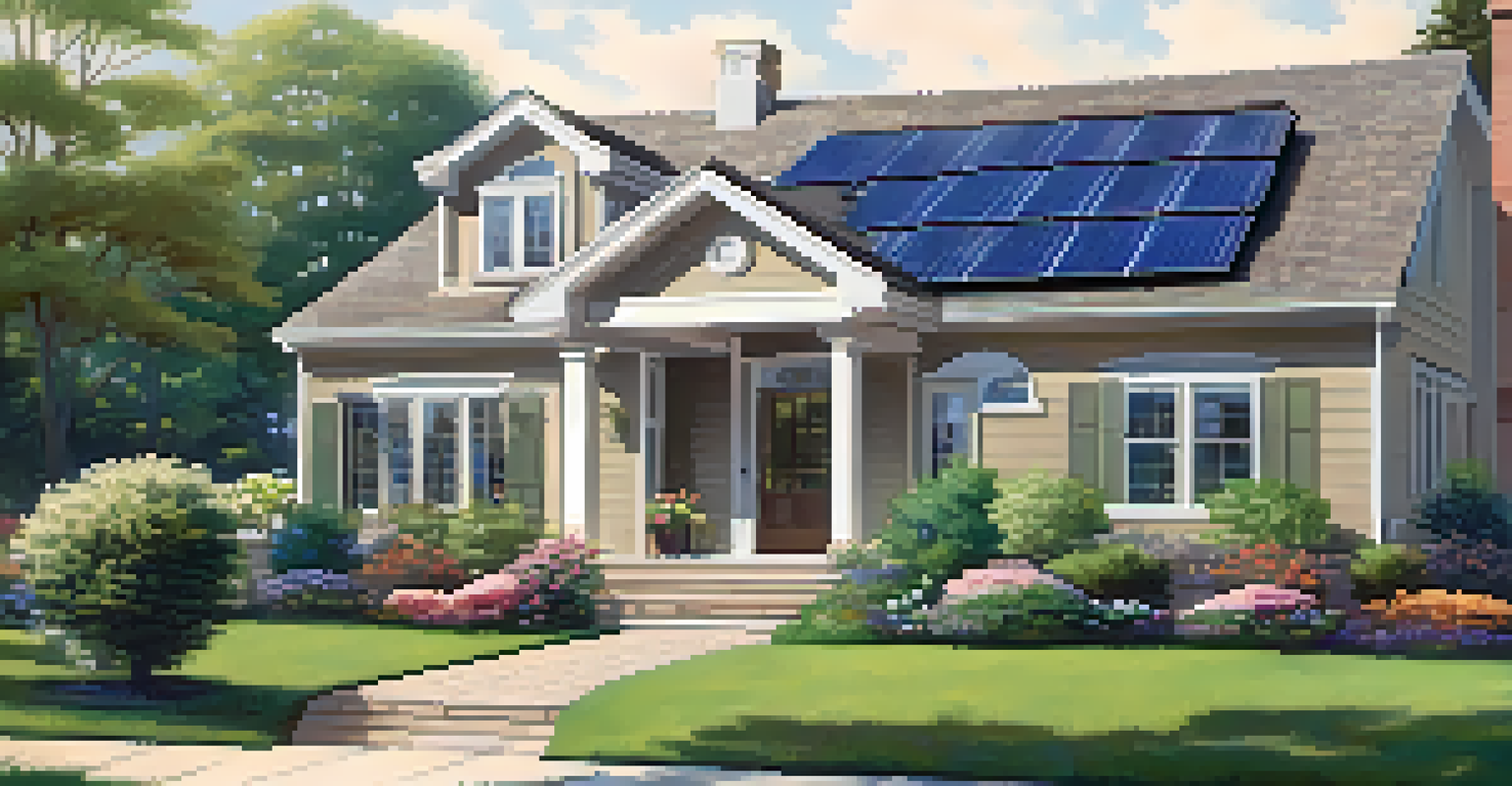Understanding Rebates for Energy-Efficient Home Upgrades

What Are Energy-Efficient Home Upgrades?
Energy-efficient home upgrades are enhancements made to your home that reduce energy consumption. These can include installing energy-efficient windows, upgrading to high-efficiency HVAC systems, or adding insulation. By improving these aspects, your home not only becomes more comfortable but also reduces your utility bills significantly.
Energy efficiency is not just a goal; it’s a responsibility we all share toward our planet and future generations.
These upgrades can seem daunting at first, particularly regarding the upfront costs. However, they often lead to long-term savings that can outweigh the initial investment. Think of it like planting a tree: while it takes time and resources to grow, the shade and fruit it provides later are well worth it.
Moreover, energy-efficient upgrades contribute to a healthier planet by reducing greenhouse gas emissions. By making your home more efficient, you're not just saving money; you're also playing a part in creating a more sustainable future.
How Do Rebates Work?
Rebates are financial incentives provided by governments or utility companies to encourage homeowners to invest in energy-efficient upgrades. Essentially, they help alleviate the cost burden associated with these improvements. For example, if you install a new energy-efficient furnace, you might receive a rebate that covers a portion of the installation costs.

Typically, rebates can come in the form of cash back after purchase or as a reduction in the upfront cost at the point of sale. This means you could end up paying less right away or receive a check in the mail after submitting your rebate application. It’s a win-win situation that makes energy upgrades more accessible.
Energy Upgrades Save Money
Energy-efficient home upgrades significantly lower utility bills and provide long-term savings.
Keep in mind that rebates can vary based on location and the specific upgrades you choose. It’s always a good idea to research what’s available in your area, as some regions offer more generous programs than others.
Types of Rebates Available
Rebates for energy-efficient upgrades can come in various forms depending on what you choose to install. Common types include rebates for energy-efficient appliances, insulation, windows, and HVAC systems. Each category often has different rebate amounts and eligibility criteria.
The greatest threat to our planet is the belief that someone else will save it.
Utility companies are typically the most common source of these rebates, as they aim to reduce overall energy consumption. For instance, if you replace an old refrigerator with an Energy Star-rated model, your utility provider might offer a rebate to encourage this eco-friendly choice.
In addition to utility companies, federal and state governments also offer incentives. Programs like the federal tax credit for solar panel installation are perfect examples of how different levels of government are stepping up to promote energy efficiency.
Eligibility Requirements for Rebates
Before diving into your energy-efficient upgrades, it’s essential to understand the eligibility requirements for rebates. Generally, these requirements can include purchasing specific products, working with certified contractors, or completing the project within a certain timeframe. Each rebate program will have its own set of guidelines.
For example, some programs may require that the installation is done by a qualified professional. This ensures that the upgrades are completed correctly and effectively. It’s like following a recipe: if you skip steps or use the wrong ingredients, the result may not be what you hoped for.
Rebates Make Upgrades Affordable
Financial incentives, like rebates from governments and utility companies, help offset the costs of energy-efficient improvements.
Always read the fine print and verify that your upgrades meet the necessary criteria. This way, you can avoid any surprises when you apply for your rebate.
Steps to Apply for Rebates
Applying for rebates can seem overwhelming, but breaking it down into steps can simplify the process. First, research available rebates in your area and determine which ones align with your planned upgrades. Websites of local utility companies or government energy offices are great places to start.
Next, keep track of all receipts and documentation related to your upgrade. This may include invoices, product specifications, and proof of installation. Think of it like collecting stamps in a passport; each piece of documentation is a stamp that helps you complete your journey toward receiving your rebate.
Finally, complete the rebate application according to the guidelines provided. Submit your application before the deadline and wait for your rebate to be processed. Patience is key here, as some programs may take weeks to finalize.
Common Mistakes to Avoid
While applying for rebates, it’s easy to make small mistakes that can delay or even disqualify your application. One common error is overlooking the eligibility criteria. Always double-check that your upgrades meet the requirements before making a purchase to avoid disappointment later.
Another frequent pitfall is not keeping thorough documentation. Missing receipts or incomplete applications can hold up your rebate. Consider creating a dedicated folder—either physical or digital—to store everything related to your upgrades, making it easier to access when needed.
Sustainability Benefits Everyone
Investing in energy efficiency not only enhances home value but also contributes to a healthier planet by reducing carbon footprints.
Lastly, don’t forget to follow up on your application. If you haven’t received your rebate after a reasonable timeframe, reach out to the program’s customer service. Persistence can pay off and ensure you receive the benefits you worked hard for.
The Long-Term Benefits of Energy-Efficient Upgrades
Investing in energy-efficient home upgrades pays off in more ways than one. Beyond the immediate financial relief that rebates provide, these upgrades can lead to substantial savings on utility bills. Imagine how great it feels to see a lower energy bill every month—it's like a small victory that adds up over time.
Moreover, energy-efficient upgrades can increase your home’s value. Potential buyers often look for homes that are energy-efficient as it translates to lower living costs. It’s similar to investing in a brand-name product; the quality and durability often lead to higher resale value.

Finally, making your home more energy-efficient contributes to environmental sustainability. By reducing energy consumption, you're helping to lessen your carbon footprint and combat climate change. This sense of contribution can enhance your overall satisfaction with your home and lifestyle.